Western Half of U.S. To See Higher Fire Risk This Spring From Drought
That risk is on display this week in the Plains states, where fierce winds are targeting parts of Texas, Oklahoma, Kansas, New Mexico, Colorado and Nebraska.
That risk is on display this week in the Plains states, where fierce winds are targeting parts of Texas, Oklahoma, Kansas, New Mexico, Colorado and Nebraska.
In an effort to protect the infrastructure at Lake Powell and the ability of Glen Canyon Dam to generate electricity, the U.S. Department of the Interior may keep nearly a half million acre-feet of water in the Utah reservoir instead of releasing that water to the Lower Basin states of Arizona, California and Nevada this year as scheduled.
Although it’s not clear the Department of Interior proposal would have any immediate impact on Colorado, it highlights the challenges of balancing a system relied on by 40 million people that has been taxed by water users and climate change. It’s also a reminder of the dire assessment of water in the West amid the driest two-decade stretch in the past 1,200 years.
The South Bay’s largest water provider is limiting when and how often people can water their yards as Santa Clara County faces the effects of a deepening drought.
“People spent so much money on their landscape they want to maintain it. Especially in town here. There’s a lot of wealth in Palo Alto. And they don’t want to see their yards go dry,” said Steve Crosariol, who works in Palo Alto and lives in Cupertino.
On a recent day in the San Joaquin Valley, the rain falling outside was cause for celebration for Aaron Fukuda.
“For us, water is a mood,” Fukuda, president of the Tulare Irrigation District, said over the phone.
As a third consecutive dry year sets in on California, drought has become a source of stress and anxiety for farmers and communities. But rain brings happiness. If only the rain came more often, Fukuda stated.
On Tuesday, Californians settled three lawsuits against the International Boundary and Water Commission or the IBWC, the binational agency that treats a portion of the sewage-laden water rolling into the U.S. from Tijuana under a treaty between the two countries.
At the crux of the many complaints by the city of Imperial Beach, Surfrider Foundation, and San Diego’s Regional Water Quality Control Board and others was general frustration that the IBWC, which runs an international wastewater treatment plant at the border, wasn’t doing enough to prevent and monitor Tijuana wastewater entering the Tijuana River and the valley on the U.S. side.
Tens of millions of gallons of water are flowing through a major pipeline in North San Diego County after successful repairs on a distressed section of Pipeline 4. The urgent repair project is a testament to the San Diego County Water Authority’s proactive Asset Management Program, which helps maintain water supply reliability while saving ratepayers money. The pipeline near Bonsall, returned to service in March, after a 10-day shutdown.
Water Authority staff detected potential pipeline weaknesses just north of West Lilac Road in January using real-time acoustic fiber-optic monitoring. This technology locates distressed sections of pipelines even while they are in use as part of the agency’s high-tech asset management program.
As a result of the frequency or rate of change of wire breaks, Water Authority staff began preparing in late January for a 10-day shutdown to replace two distressed sections of pipe.
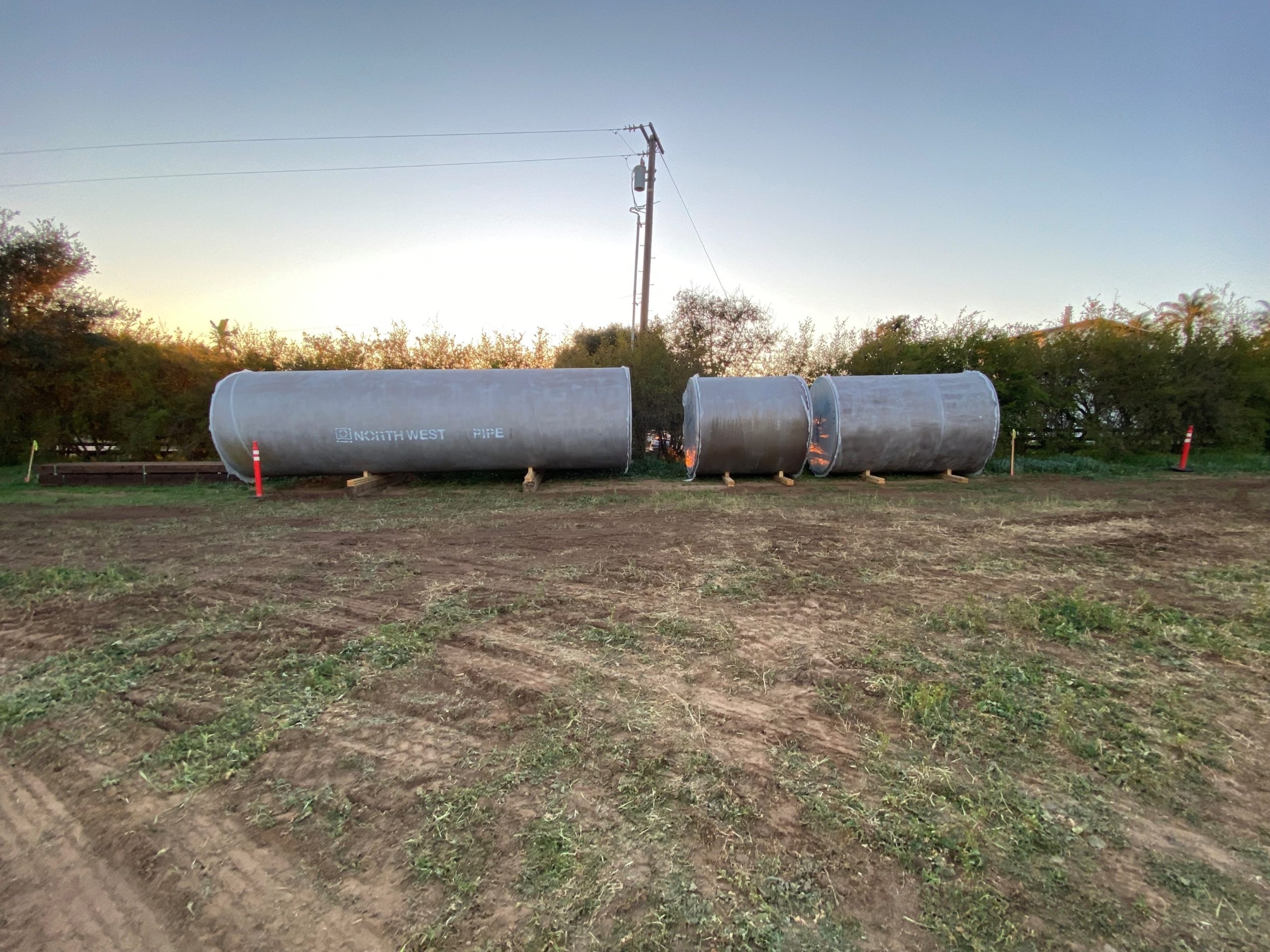
The pipe was delivered on February 28.
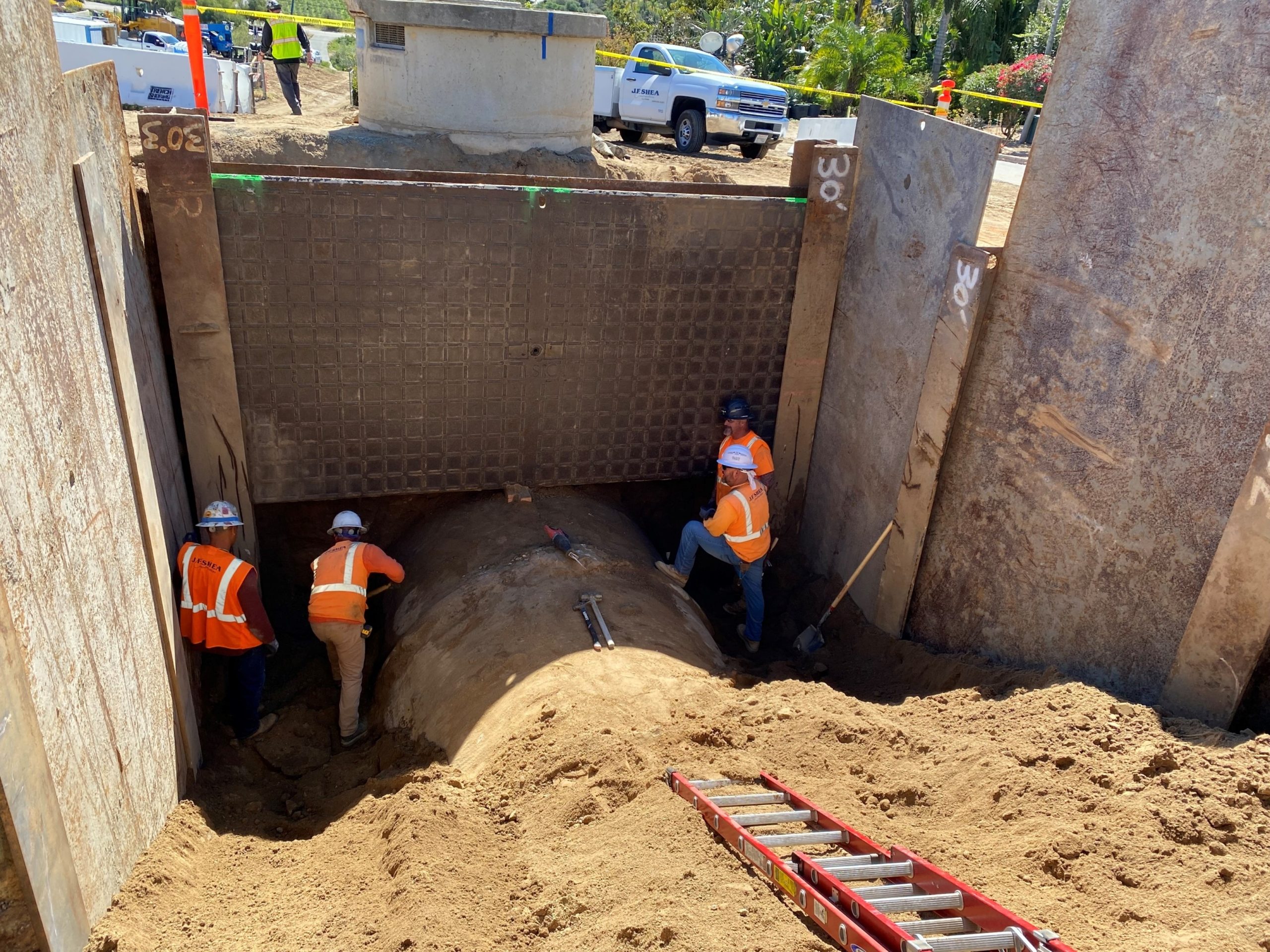
The pipeline was shutdown March 1.
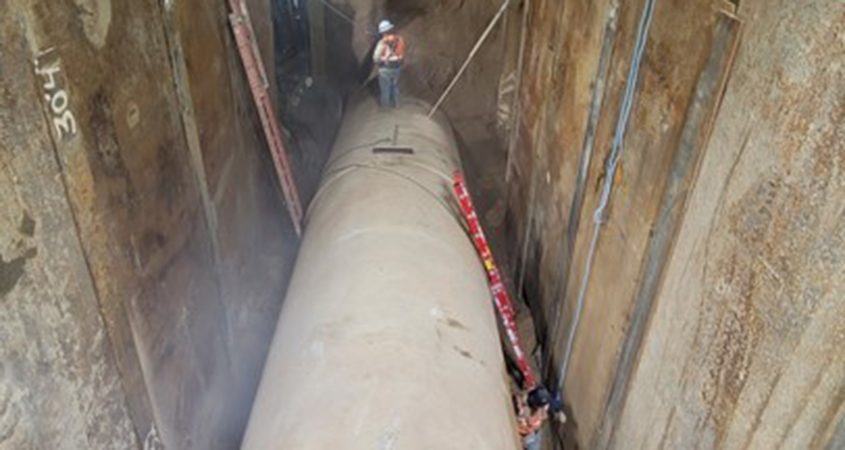
By that evening, the pipe was nearly excavated.

The next morning, March 2, the Water Authority asset management team performed
an evaluation of the wire breaks.

After the inspection, the installation of the new steel pipe started, including rebar
work for the concrete encasement. On March 5, the contractor poured 12 truckloads of concrete for the encasement.
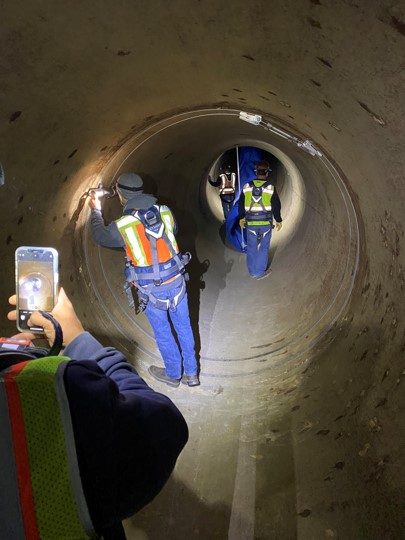
Once the pipeline replacement work was completed, crews
took a final walk through of the pipe in preparation of refill.
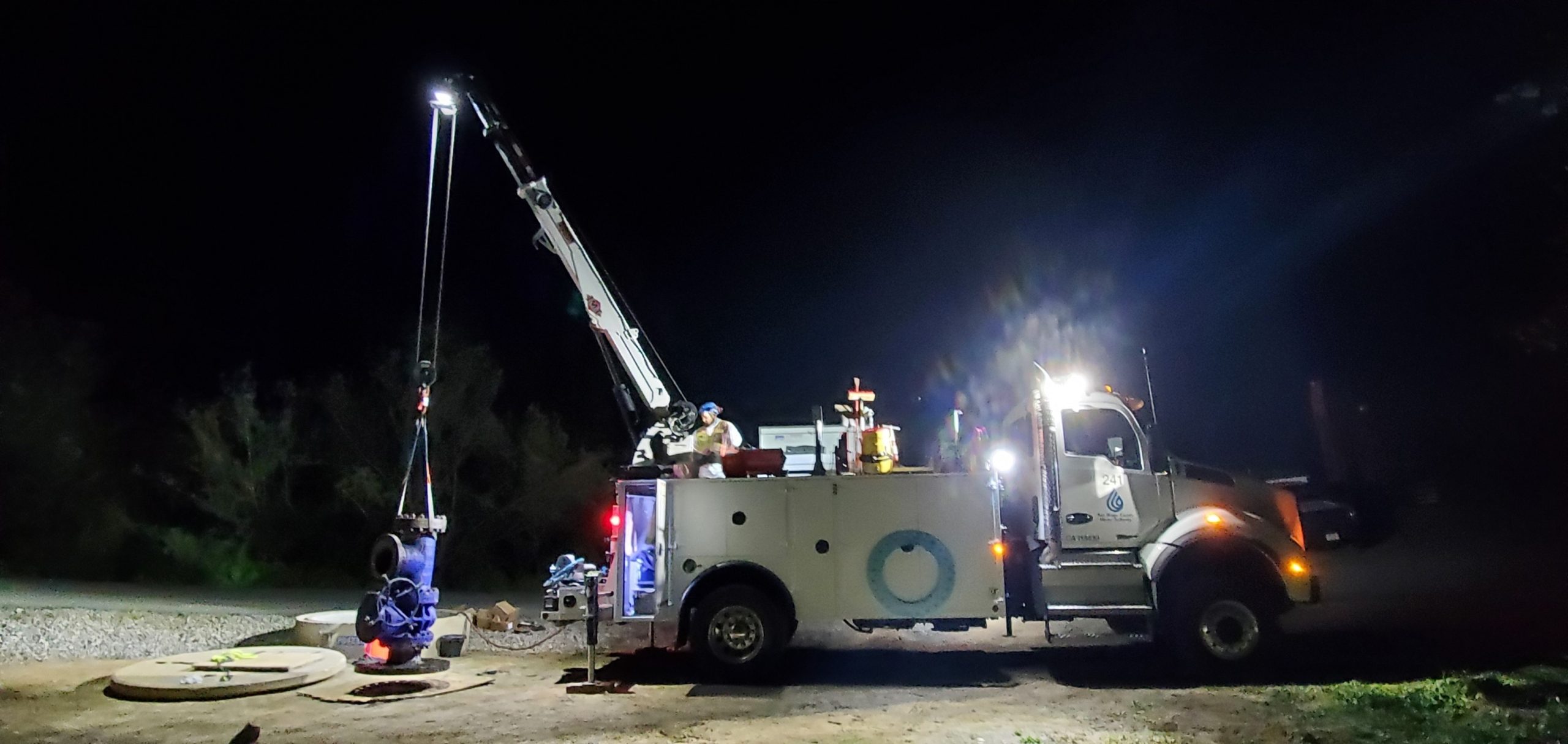
Maintenance crews reset a blowoff valve assembly that was removed for access to the pipeline.
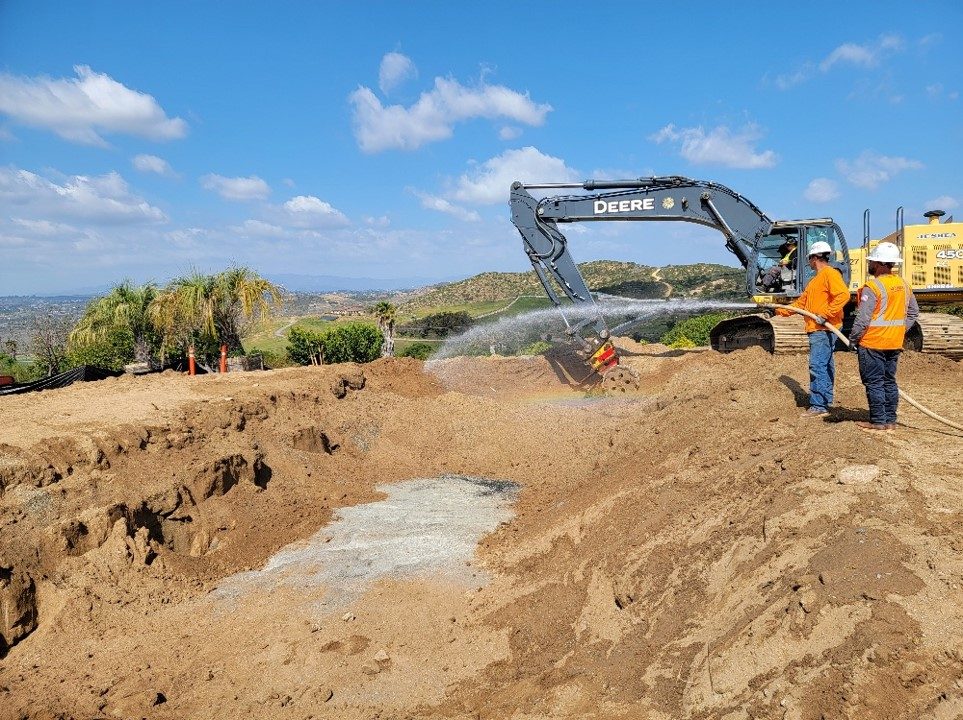
By the last day of the 10-day shutdown, the contractor had pulled the shoring and was completing backfill, allowing the pipeline to be put back into operation according to schedule.
Pipeline 4 repair work included collaboration with five North County member agencies served by the pipeline, and operations staff from throughout San Diego County, which helped plan and execute the timely completion of the repair.
The asset management team uses the latest inspection technologies to detect age-related defects that might be occurring on pipelines and other water conveyance facilities. By identifying defects early, they can often be corrected using localized, low-cost repair methods prior to them becoming larger, more costly issues.
The Water Authority operates and maintains a regional water delivery system capable of delivering more than 900 million gallons of water per day. The system consists of 310 miles of large-diameter pipeline, 1,600 aqueduct-related structures, and approximately 100 metering/flow control facilities.
Vista, Calif. – Vista Irrigation District is saddened by the passing of board member Paul Dorey on April 8, 2022.
Dorey served on the district board of directors for over 15 years. He retired from the district in 2004 after nearly 33 years of service and was first elected in 2006. Dorey has served as both board president and vice president three times each; he also served as the chair of the district’s fiscal policy, Warner Ranch, groundwater, water sustainability and public affairs committees, and as the district’s representative on the San Luis Rey Watershed Council.
“Paul cared deeply for his community and dedicated his career to public service and ensuring the delivery of a safe and reliable water supply to district customers,” stated Marty Miller, board president.
Green lawns, old appliances and leaky pipes all consume significant amounts of California’s water, and researchers have calculated in a new study that the state could reduce water use by more than 30% in cities and suburbs by investing in measures to use water more efficiently.
The study by the Pacific Institute, a water think tank in Oakland, also found big untapped potential for urban areas to reduce strains on overused rivers and aquifers by investing in local projects to recycle more wastewater and capture more stormwater.
Concerned about diminishing water supplies this summer and a failure of the public to hit conservation targets, Santa Clara County’s largest water agency is moving forward with plans to ask the county’s 2 million residents to water landscaping no more than two days a week, down from the current three days.
Last June, the Santa Clara Valley Water District declared a drought emergency and asked the public to cut water use 15% compared to 2019 levels. But in February, amid record-dry conditions, South Bay residents ignored that request, cranking up sprinklers and increasing water use countywide by 23%.
The Coachella Valley Water District will consider implementing several water conservation measures on Tuesday, including a ban on outdoor water use for spray irrigation during daytime hours, requiring restaurants to only serve water upon request, and increasing the turf rebate amount.
The meeting comes as the state is in a deepening drought after one of the driest starts to spring in decades. Almost all of California and much of the Western U.S. is in severe to extreme drought, according to U.S. drought monitor.